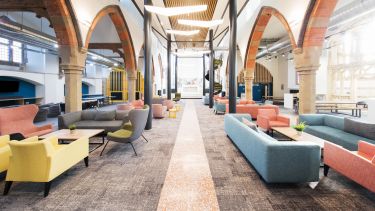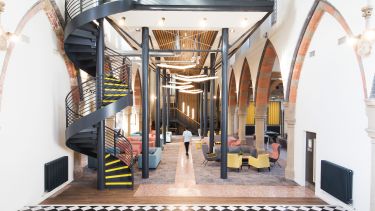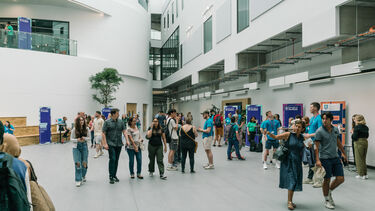St. Vincent’s church has stood on the junction of Solly Street and Hollis Croft for over a hundred years.
Originally built as a school-chapel to serve the predominantly Catholic local population, many being Irish immigrants who had fled the famine between 1845-49 to work in Sheffield’s booming steel and cutlery trade.
The chapel was converted into a church in 1911, with extensions to the building and a new tower, designed by Charles Hadfield, the grandson of the original architect Matthew Ellison Hadfield.
During the Sheffield Blitz of 1940, the church suffered substantial damage which was mostly repaired thanks to fundraising efforts in the 1950’s.
However, the war-damage, coupled with slum clearances in the surrounding area during the pre-war era had led to a diminishing congregation.
In 1996 St. Vincent’s closed its doors as a place of worship, while the adjacent Catholic Club continued to serve Sheffield’s Catholic community for another two decades.
The site has a long history as a spiritual home for Catholics arriving in Sheffield from afar, particularly Italy and Ireland, and it also has sentimental significance for many people who were baptised, got married or worshipped there before the church building closed in 1996.
Fr. Patrick Walsh
Vicar
Various plans to redevelop the site had been touted following the closure of the church in 1996. For years the building lay empty, while the adjacent car park was let on a commercial basis by the parish, who donated the revenue to charitable purposes.
The plot was purchased by Unite Students, who submitted a planning application in 2016 to transform the area into halls for Sheffield students.
Planning was granted in 2017, and St. Vincent’s Place opened the doors to its’ first new residents in September 2018.
For many families, St Vincent's was the heart of the community. John Butler (pictured) attended the church for decades, along with generations of his family before him.
John took his first communion at St Vincent's, married his wife Valerie in 1974 and had his two children Bernadette and Oliver christened there.
St Vincent's holds many special memories for me and my family. I remember the community spirit fondly and have a vivid memory of taking part in the May Queen procession in 1952.
I am amazed at the transformation of the church now and so happy that its history can live on for future generations to enjoy.
John Butler
Churchgoer
Today the Church remains, with new blocks of student housing nested adjacent to house the 528 students who now call it home.
The church has been beautifully restored as a communal space to serve the needs of its residents, much as the old church did for the residents of the Crofts and beyond for 150 years.
Inside the building, it features widespread social space for students to study, socialise and relax, a cinema room, communal kitchen, along with soundproofed rooms for music practice.
Years ago, a local parishioner, Norah White described the harmony of the residents around St. Vincent’s church as ‘Irish and English Catholics, Italian Catholics, English Protestants and Jewish people living in St Vincent’s Parish, but one thing we all have in common is that we are all Vincentians.’
This spirit of multiculturalism and harmony lives on today with St. Vincent’s housing students from across the world who have come to study in Sheffield, including a sizable contingent of students studying at the University of Sheffield International College at No. 3 Solly Street.




